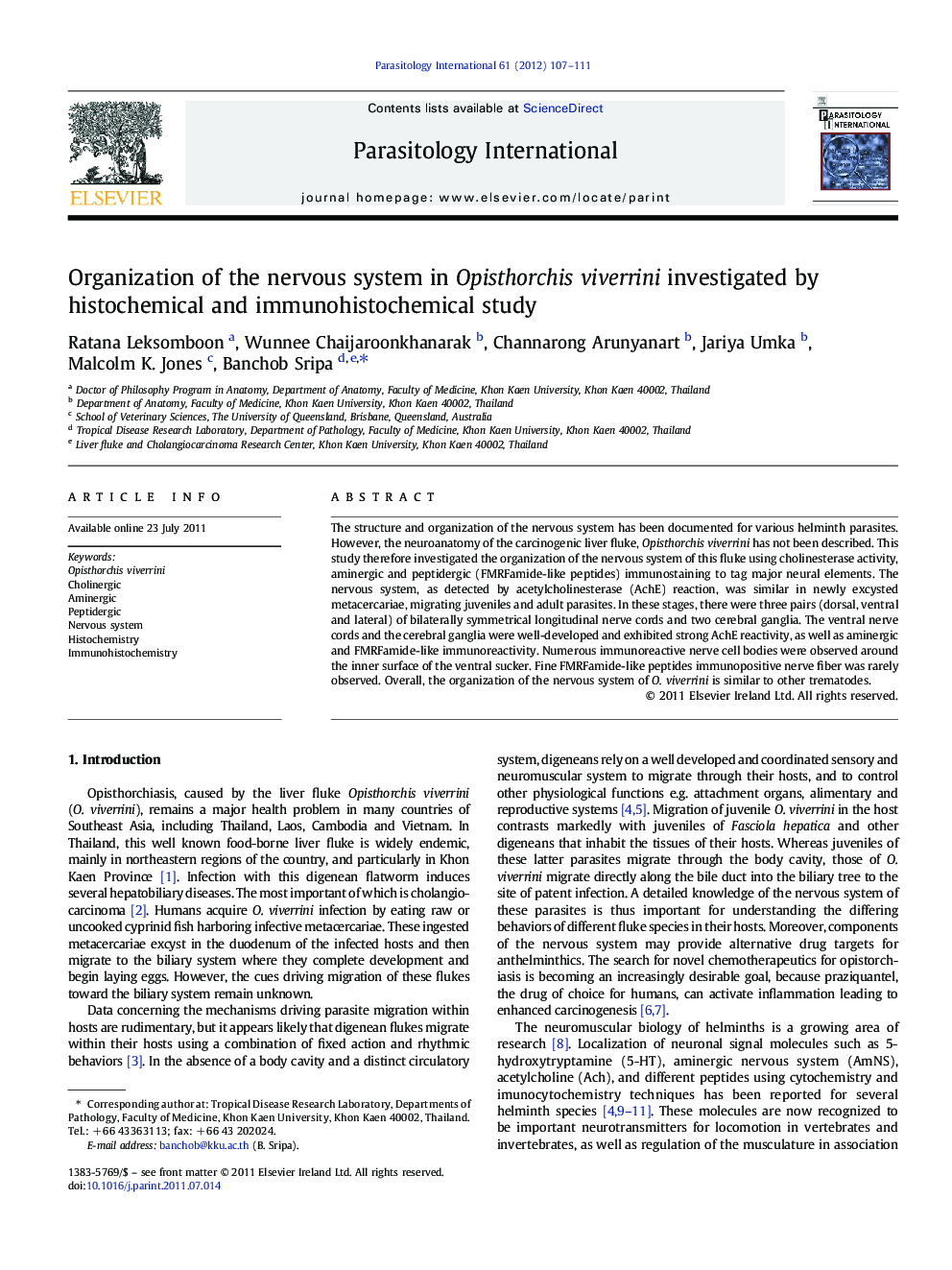| Article ID | Journal | Published Year | Pages | File Type |
|---|---|---|---|---|
| 3417925 | Parasitology International | 2012 | 5 Pages |
The structure and organization of the nervous system has been documented for various helminth parasites. However, the neuroanatomy of the carcinogenic liver fluke, Opisthorchis viverrini has not been described. This study therefore investigated the organization of the nervous system of this fluke using cholinesterase activity, aminergic and peptidergic (FMRFamide-like peptides) immunostaining to tag major neural elements. The nervous system, as detected by acetylcholinesterase (AchE) reaction, was similar in newly excysted metacercariae, migrating juveniles and adult parasites. In these stages, there were three pairs (dorsal, ventral and lateral) of bilaterally symmetrical longitudinal nerve cords and two cerebral ganglia. The ventral nerve cords and the cerebral ganglia were well-developed and exhibited strong AchE reactivity, as well as aminergic and FMRFamide-like immunoreactivity. Numerous immunoreactive nerve cell bodies were observed around the inner surface of the ventral sucker. Fine FMRFamide-like peptides immunopositive nerve fiber was rarely observed. Overall, the organization of the nervous system of O. viverrini is similar to other trematodes.
Graphical abstractFigure optionsDownload full-size imageDownload as PowerPoint slideHighlights► Neuroanatomy of the carcinogenic liver fluke, Opisthorchis viverrini. ► localization of cholinesterase activity, and aminergic and peptidergic. ► AchE reactivity resemble to the patterns of aminergic and FMRFamide-like peptide immunoreactivity.
